第一次编程作业
GitHub链接:https://github.com/magnetic233/031802431
1、计算模块接口的设计与实现过程
(1)题目要求命令行参数读入,python使用的命令行参数是argv函数,按照python main.py [参数1] [参数2] [参数3]的格式,可以接受命令行参数
使用了python的sys库argv函数来获取命令行参数:
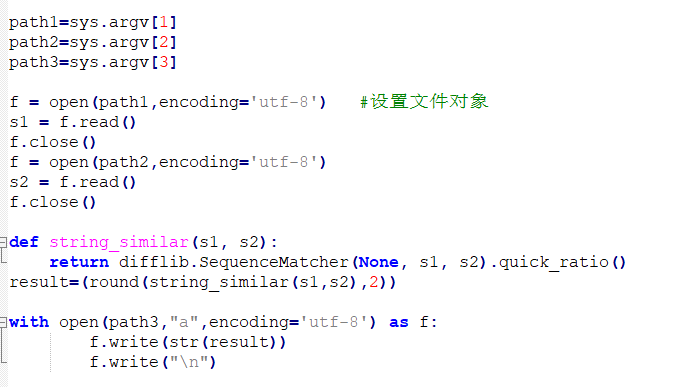
刚刚开始写的时候先搭建了文件读入和输出的框架,算法用了python内置的indiffer暂时凑数
(2)算法是从网上借鉴的余弦相似度算法 处理分三个模块 提取关键词 one_hot编码 以及余弦的计算
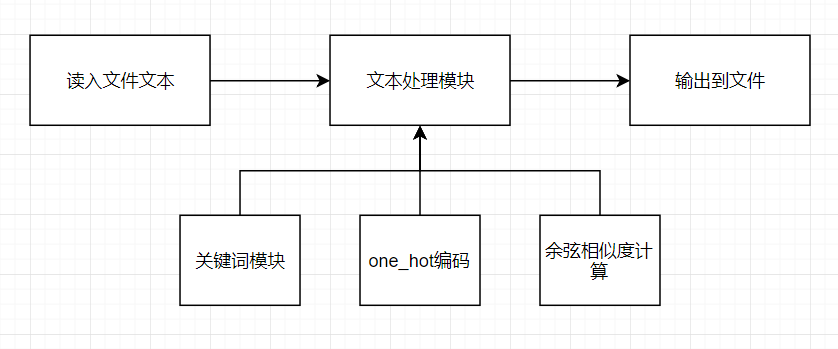 大体处理流程是:
大体处理流程是:
(1)找出两篇文章的关键词;
(2)每篇文章各取出若干个关键词,合并成一个集合,计算每篇文章对于这个集合中的词的词频
(3)生成两篇文章各自的词频向量;
(4)计算两个向量的余弦相似度,值越大就表示越相似。
def __init__(self, content_x1, content_y2):
self.s1 = content_x1
self.s2 = content_y2
def main(self):
# 提取关键词
keywords1 = self.extract_keyword(self.s1)
keywords2 = self.extract_keyword(self.s2)
# 词的并集
union = set(keywords1).union(set(keywords2))
# 编码
word_dict = {}
i = 0
for word in union:
word_dict[word] = i
i += 1
# oneHot编码
s1_cut_code = self.one_hot(word_dict, keywords1)
s2_cut_code = self.one_hot(word_dict, keywords2)
# 余弦相似度计算
sample = [s1_cut_code, s2_cut_code]
# 除零处理
try:
sim = cosine_similarity(sample)
return sim[1][0]
except Exception as e:
print(e)
return 0.0
↓提取关键词,进行词频和权重计算
def extract_keyword(content): # 提取关键词
# 正则过滤 html 标签
re_exp = re.compile(r'(<style>.*?</style>)|(<[^>]+>)', re.S)
content = re_exp.sub(' ', content)
# html 转义符实体化
content = html.unescape(content)
# 切割
seg = [i for i in jieba.cut(content, cut_all=True) if i != '']
# 提取关键词
keywords = jieba.analyse.extract_tags("|".join(seg), topK=200, withWeight=False)
return keywords
onehot编码,将离散型特征使用one-hot编码,会让特征之间的距离计算更加合理。
def one_hot(word_dict, keywords): # oneHot编码
# cut_code = [word_dict[word] for word in keywords]
cut_code = [0]*len(word_dict)
for word in keywords:
cut_code[word_dict[word]] += 1
return cut_code
2、计算模块接口部分的性能改进
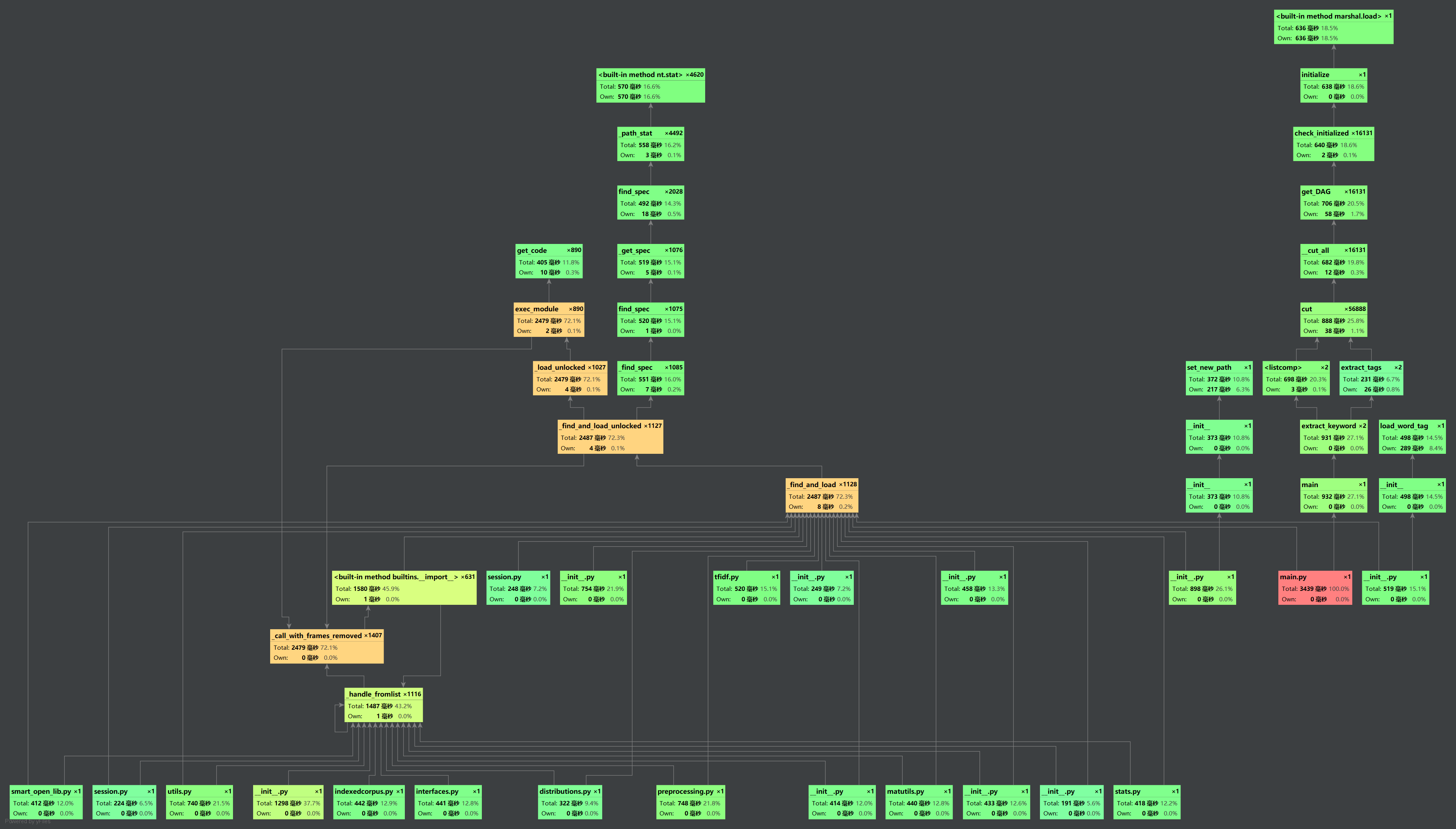 👆新窗口打开高清图
👆新窗口打开高清图
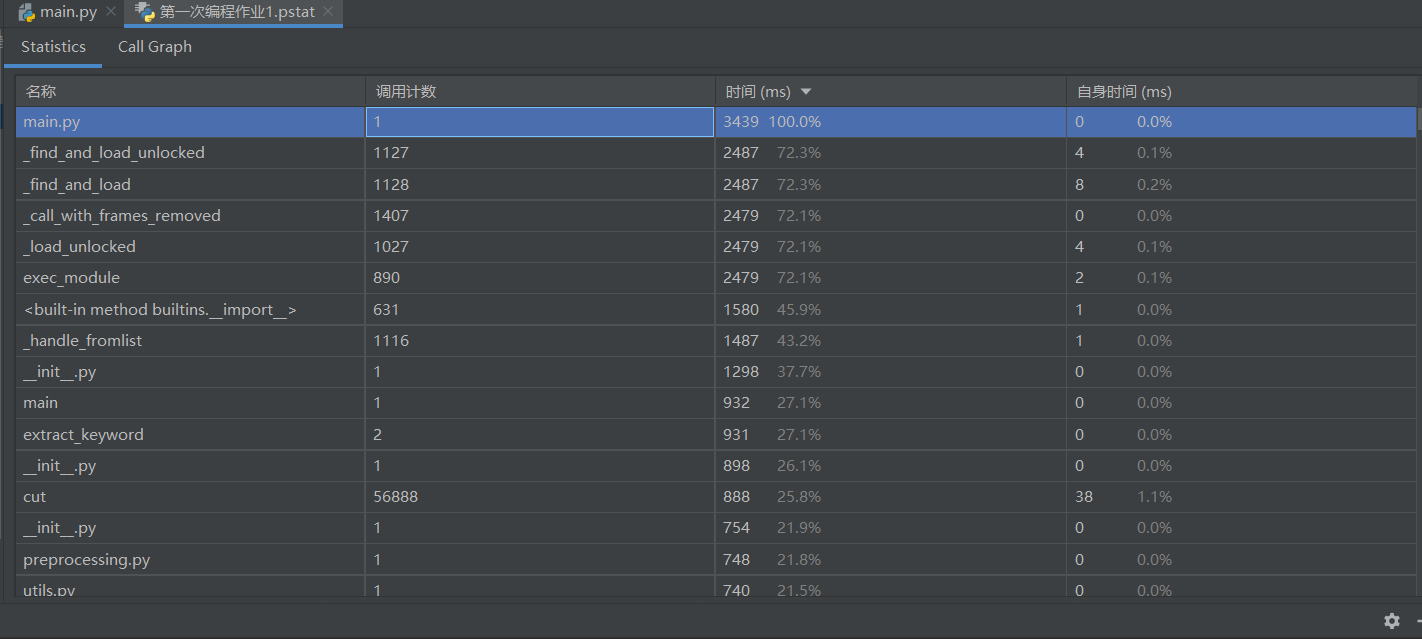
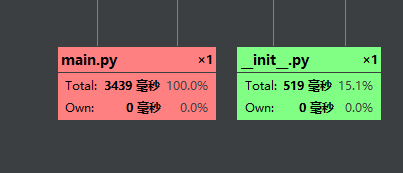
用pycharm的profile测试 第一个add和原orig的文本的测试 时间勉强合格。emmm至于改进。。。什么改进?🤦
3、单元测试
因为看不懂并且用不来unittest 🤦,所以测试直接写了一个test.py
用python的os.system 批量调用了命令行启动
4.异常处理
如果出现路径错误找不到文件 会报错
Traceback (most recent call last):
File "main.py", line 73, in <module>
f = open(path1,encoding='utf-8') #设置文件对象
FileNotFoundError: [Errno 2] No such file or directory: 'C:\\Users\\153111\\Desktop\\软工实践\\个人编程作业样例数据\\sim_0.8\\orig.txt'
而test.py如果不是最后一个样例则会闪退🤦
5、PSP表格
| PSP2.1 | Personal Software Process Stages | 预估耗时(分钟) | 实际耗时(分钟) |
|---|---|---|---|
| Planning | 计划 | 20 | 20 |
| · Estimate | · 估计这个任务需要多少时间 | 20 | 20 |
| Development | 开发 | 600 | 830 |
| · Analysis | · 需求分析 (包括学习新技术) | 300 | 400 |
| · Design Spec | · 生成设计文档 | 30 | 20 |
| · Design Review | · 设计复审 | 20 | 20 |
| · Coding Standard | · 代码规范 (为目前的开发制定合适的规范) | 20 | 20 |
| · Design | · 具体设计 | 30 | 50 |
| · Coding | · 具体编码 | 120 | 200 |
| · Code Review | · 代码复审 | 50 | 60 |
| · Test | · 测试(自我测试,修改代码,提交修改) | 30 | 60 |
| Reporting | 报告 | 80 | 120 |
| · Test Repor | · 测试报告 | 30 | 60 |
| · Size Measurement | · 计算工作量 | 30 | 50 |
| · Postmortem & Process Improvement Plan | · 事后总结, 并提出过程改进计划 | 20 | 10 |
| · 合计 | 700 | 970 |


